applications
features
key specifications (typical)
table of contents
list of figures
list of tables
1 application system
1.1 overview
1.1.1 typical OV2778 standalone camera
figure 1-1 standalone camera block diagram for automotive applications
1.1.2 typical OV2778 multi-camera system
figure 1-2 multi-camera block diagram
1.2 signal description and pin assignment
figure 1-3 pin diagram
table 1-1 signal descriptions (sheet 1 of 3)
table 1-2 pin states under various conditions (sheet 1 of 2)
table 1-3 GPIO control registers (sheet 1 of 2)
table 1-4 pad equivalent circuit (sheet 1 of 2)
1.3 reference design
figure 1-4 OV2778 MIPI reference schematic
figure 1-5 OV2778 DVP reference schematic
1.3.1 external components
figure 1-6 OV2778 power supplies and recommended external decoupling
1.3.2 power on reset (POR) generation
1.4 power up sequence/ boot sequence
figure 1-7 power on timing diagram
table 1-5 power on timing
1.4.1 power down sequence
1.4.2 operating modes
1.4.3 activation sequence
1.4.4 deactivation sequence
1.4.5 early activation
2 sensor architecture
figure 2-1 OV2778 block diagram
3 image sensor core
figure 3-1 sensor core block diagram
3.1 pixel array structure
figure 3-2 pixel array region RGB-Ir filter layout
figure 3-3 exposures and captures diagram
figure 3-4 integration time diagram
3.2 pixel array access
figure 3-5 pixel array access diagram
3.3 mirror and flip
table 3-1 register setting for mirror
figure 3-6 horizontal mirror and vertical flip samples
3.4 frame timing and maximum frame rate
figure 3-7 row address versus time graph
figure 3-8 frame output timing diagram
table 3-2 supported output formats and frame rates for MIPI/LVDS
table 3-3 supported output formats and frame rates for DVP
table 3-4 timing control registers (sheet 1 of 2)
3.5 exposure control
table 3-5 exposure control registers
3.6 black level calibration (BLC)
3.6.1 advanced operation of the BLC
table 3-6 BLC control registers (sheet 1 of 5)
3.7 PLL
figure 3-9 PLL1 control diagram
figure 3-10 PLL2 control diagram
table 3-7 PLL control registers (sheet 1 of 2)
3.8 temperature sensor
table 3-8 temperature sensor registers
4 image processor
figure 4-1 image processor block diagram
4.1 test pattern
4.1.1 analog color bar overlay
figure 4-2 color bar types
4.1.2 digital test patterns
figure 4-3 vertical bars test pattern
figure 4-4 vertical bars with vertical gradient test pattern
figure 4-5 vertical bars with horizontal gradient test pattern
figure 4-6 vertical bars with diagonal gradient test pattern
figure 4-7 vertical bars with rolling line test pattern
figure 4-8 random image test pattern
figure 4-9 color squares test pattern
figure 4-10 black and white squares test pattern
figure 4-11 chart test pattern
table 4-1 test pattern control registers
4.2 HDR combine principle
figure 4-12 HDR combine principle diagram
table 4-2 combine control registers
5 image output interface
5.1 image output format
table 5-1 image output format summary
table 5-2 interface control register
table 5-3 register setting for different output formats
5.2 data compression algorithm
5.2.1 16b to 12b
figure 5-1 16-bit to 12-bit PWL compression
5.2.2 12b to 10b
figure 5-2 12-bit to 10-bit PWL compression
5.3 HDR output
5.3.1 MIPI
figure 5-3 non-staggered HDR with MIPI virtual channel diagram
figure 5-4 non-staggered HDR with MIPI virtual channel detail diagram
figure 5-5 staggered HDR with MIPI virtual channel diagram
figure 5-6 staggered HDR with MIPI virtual channel detail diagram
figure 5-7 non-staggered HDR without MIPI virtual channel overview diagram
figure 5-8 non-staggered HDR without MIPI virtual channel detail diagram
figure 5-9 staggered HDR without MIPI virtual channel overview diagram
figure 5-10 staggered HDR without MIPI virtual channel detail diagram
table 5-4 supported output formats and frame rates for MIPI
table 5-5 MIPI RAW image data types
figure 5-11 12b linear mode diagram
figure 5-12 10b linear mode diagram
figure 5-13 16b DCG + 12b dual HDR diagram
figure 5-14 12b compressed DCG + 12b dual HDR diagram
figure 5-15 3x12b (3x10b) DCG dual HDR diagram
figure 5-16 12b (10b) RAW DCG (HCG or LCG) + 12b (10b) VS dual HDR diagram
figure 5-17 16b DCG single HDR diagram
figure 5-18 12b compressed DCG single HDR diagram
figure 5-19 2x12b DCG single HDR diagram
table 5-6 MIPI control registers (sheet 1 of 10)
5.3.2 LVDS
figure 5-20 staggered HDR with LVDS dedicated lane (4-lane) diagram
figure 5-21 staggered HDR with LVDS dedicated lane (2-lane) diagram
table 5-7 supported output formats and frame rates for LVDS
figure 5-22 12 bits linear mode diagram
figure 5-23 10 bits linear mode diagram
figure 5-24 16b DCG + 12b dual HDR diagram
figure 5-25 12b compressed DCG + 12b dual HDR diagram
figure 5-26 3x12b (3x10b) DCG dual HDR diagram
figure 5-27 12b (10b) RAW DCG (HCG or LCG) + 12b (10b) VS dual HDR diagram
figure 5-28 16b DCG single HDR diagram
figure 5-29 12b compressed DCG single HDR diagram
figure 5-30 2x12b DCG single HDR diagram
table 5-8 LVDS control registers
5.3.3 DVP
figure 5-31 DVP diagram
figure 5-32 DVP setup/hold time diagram
table 5-9 DVP setup/hold time
figure 5-33 DVP timing diagram
figure 5-34 staggered HDR with DVP diagram
table 5-10 supported output formats and frame rates for DVP
figure 5-35 12 bits linear mode diagram
figure 5-36 10 bits linear mode diagram
figure 5-37 12b RAW DCG (HCG or LCG) + 12b VS diagram
figure 5-38 single exposure HDR diagram
figure 5-39 2x12b DCG single HDR diagram
table 5-11 DVP control registers (sheet 1 of 2)
5.4 instructions for backend control
5.4.1 VS data path delay
figure 5-40 sensor frame control signals diagram
table 5-12 VS data path delay register s
5.5 register writing
5.5.1 suggestion for writing register value just after VSYNC or FS
5.6 embedded data
5.6.1 embedded data format at output
figure 5-41 embedded data layout diagram
table 5-13 embedded data registers
5.7 group hold
table 5-14 group hold control registers (sheet 1 of 2)
5.8 cyclic redundancy check
5.8.1 embedded data
5.8.2 SCCB communication
table 5-15 SCCB CRC registers
6 SCCB interface
6.1 SCCB timing
figure 6-1 SCCB interface timing
table 6-1 SCCB interface timing specifications
6.2 direct access mode
6.2.1 message format
figure 6-2 message type
6.2.2 read / write operation
figure 6-3 SCCB single read from random location
figure 6-4 SCCB single read from current location
figure 6-5 SCCB sequential read from random location
figure 6-6 SCCB sequential read from current location
figure 6-7 SCCB single write to random location
figure 6-8 SCCB sequential write to random location
7 OTP memory
7.1 OTP memory map
table 7-1 OTP memory map overview
8 operating specifications
8.1 absolute maximum ratings
table 8-1 absolute maximum ratings
8.2 functional temperature
table 8-2 functional temperature
8.3 DC characteristics
table 8-3 DC characteristics (-40°C < TJ < 125°C)
8.4 AC characteristics
table 8-4 timing characteristics
9 mechanical specifications
9.1 physical specifications
figure 9-1 package specifications
table 9-1 package dimensions
9.2 IR reflow specifications
figure 9-2 IR reflow ramp rate requirements
table 9-2 reflow conditions
9.3 protective film specifications
figure 9-3 protective film specifications
10 optical specifications
10.1 sensor array center
figure 10-1 sensor array center
10.2 lens chief ray angle (CRA)
figure 10-2 chief ray angle (CRA)
table 10-1 CRA versus image height plot (sheet 1 of 2)
appendix A register table
A.1 module name and address range
A.2 device control registers
revision history

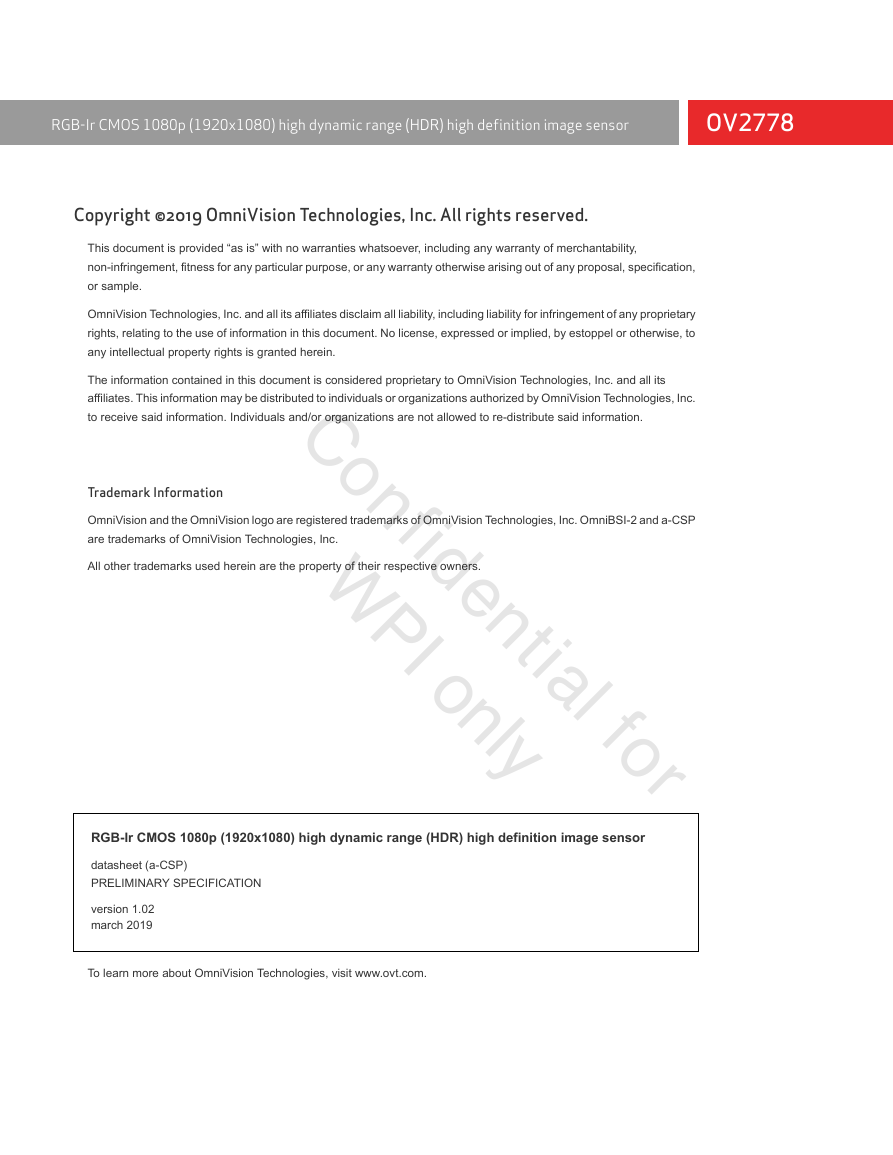
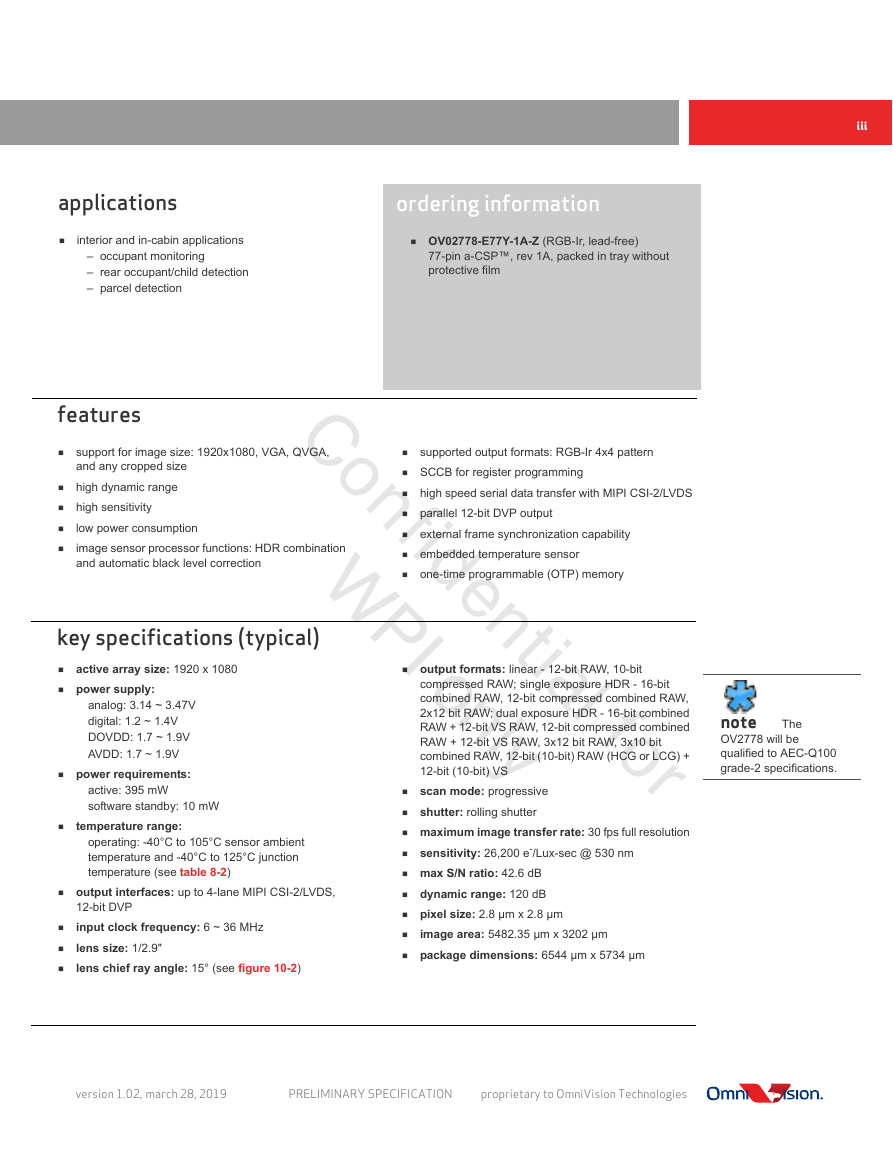
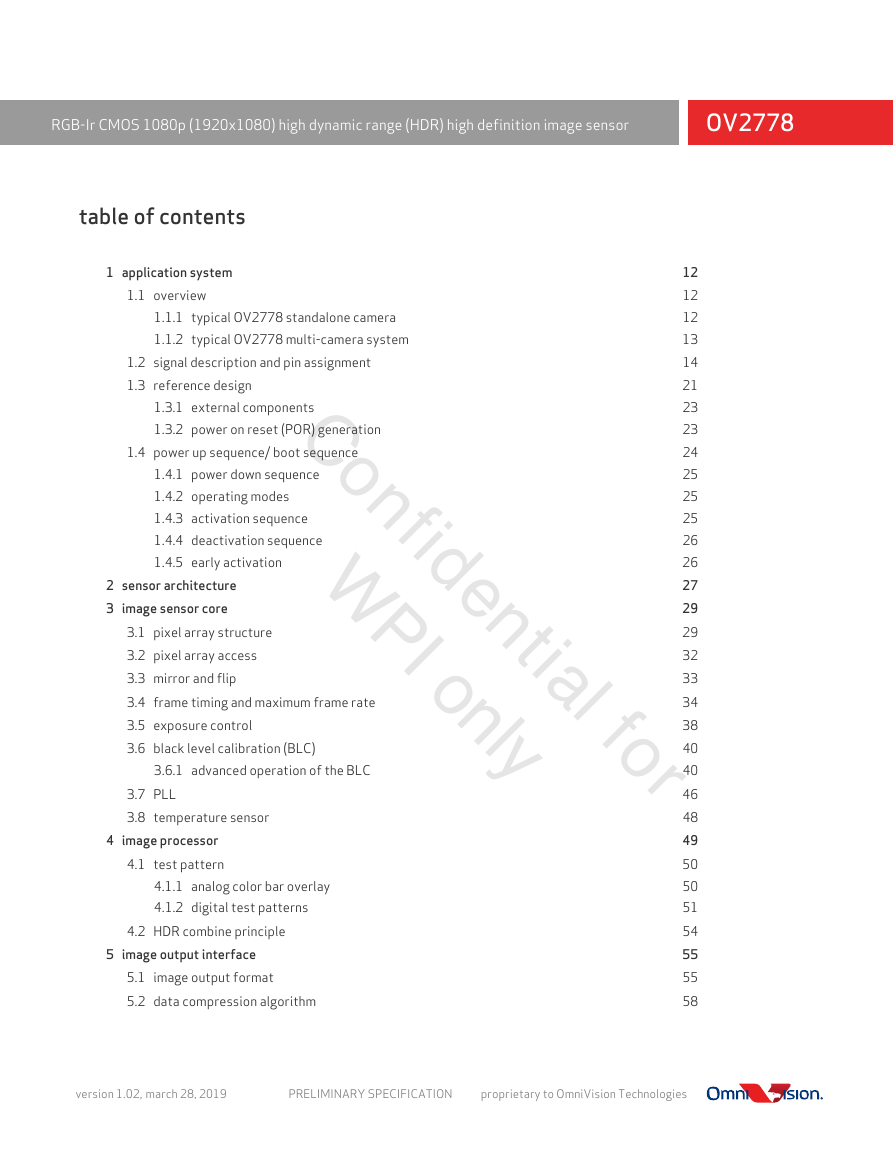
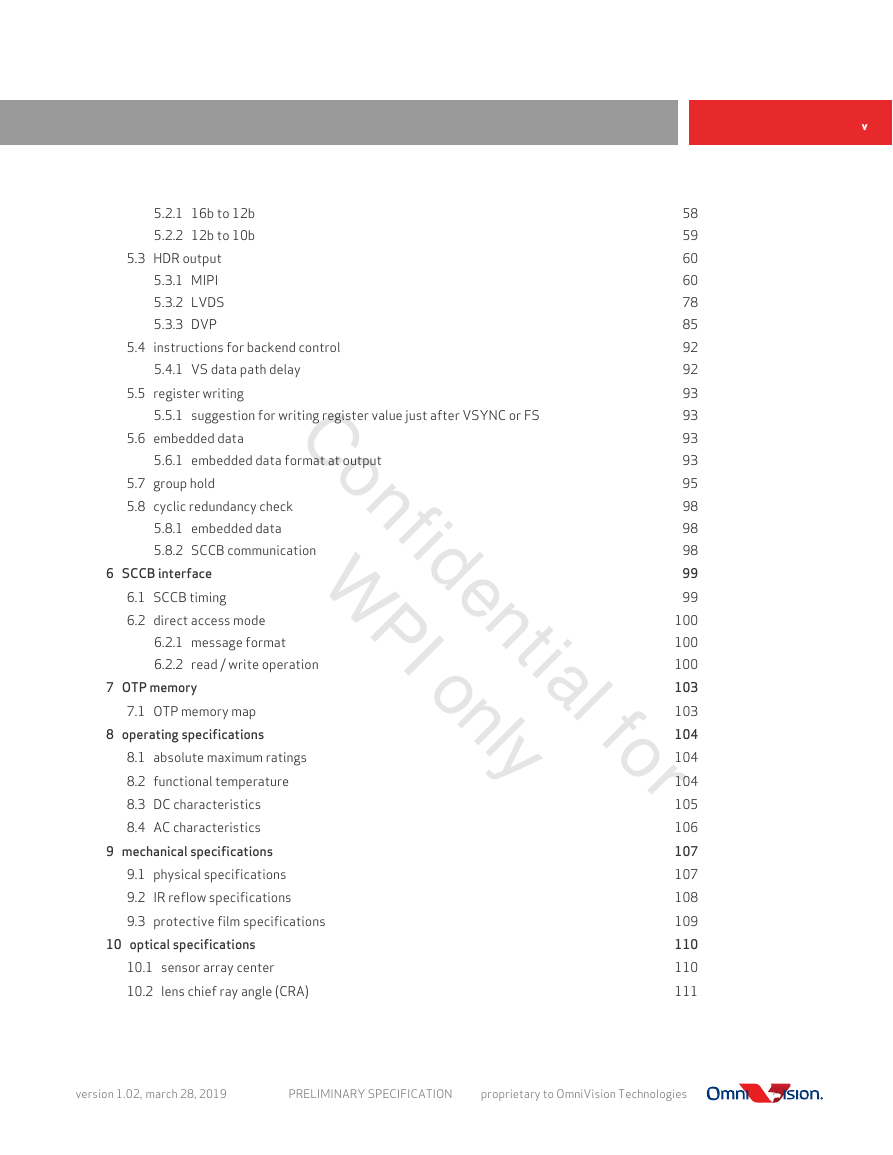

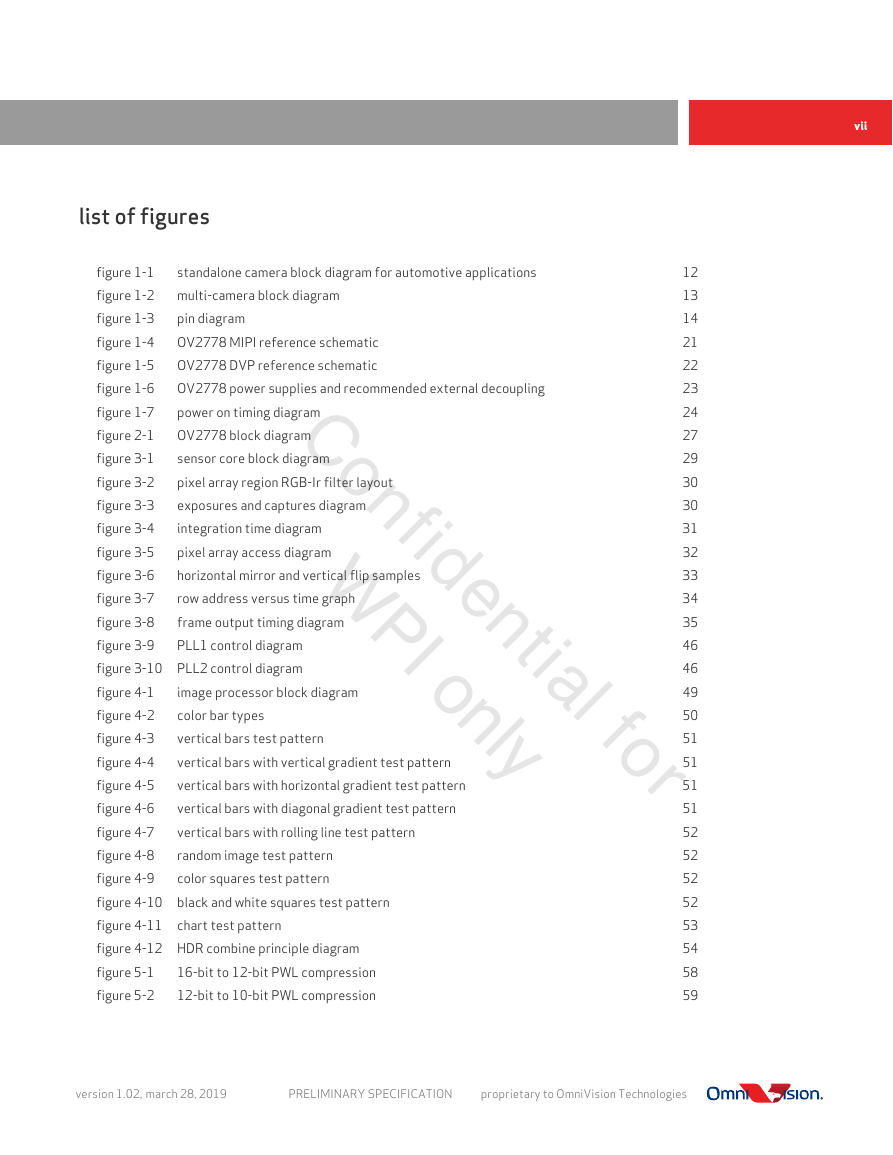
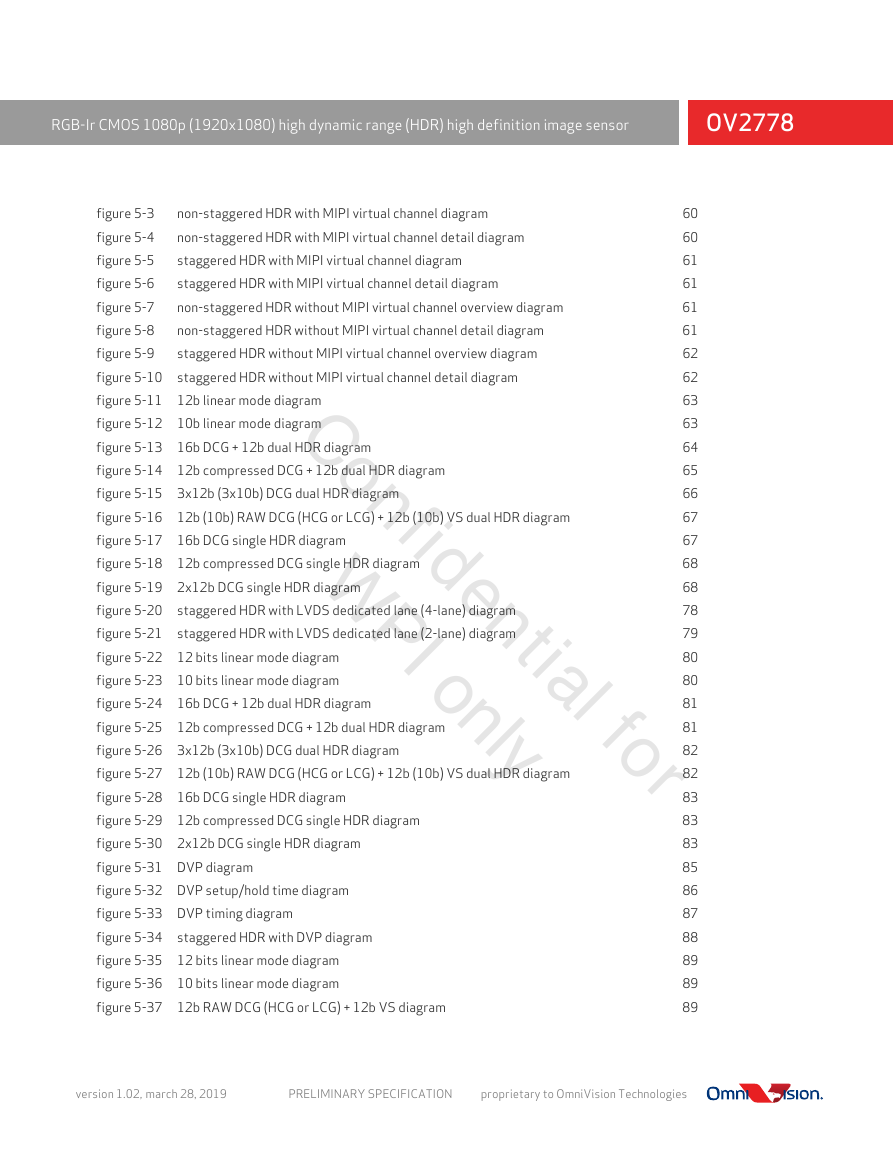








 2023年江西萍乡中考道德与法治真题及答案.doc
2023年江西萍乡中考道德与法治真题及答案.doc 2012年重庆南川中考生物真题及答案.doc
2012年重庆南川中考生物真题及答案.doc 2013年江西师范大学地理学综合及文艺理论基础考研真题.doc
2013年江西师范大学地理学综合及文艺理论基础考研真题.doc 2020年四川甘孜小升初语文真题及答案I卷.doc
2020年四川甘孜小升初语文真题及答案I卷.doc 2020年注册岩土工程师专业基础考试真题及答案.doc
2020年注册岩土工程师专业基础考试真题及答案.doc 2023-2024学年福建省厦门市九年级上学期数学月考试题及答案.doc
2023-2024学年福建省厦门市九年级上学期数学月考试题及答案.doc 2021-2022学年辽宁省沈阳市大东区九年级上学期语文期末试题及答案.doc
2021-2022学年辽宁省沈阳市大东区九年级上学期语文期末试题及答案.doc 2022-2023学年北京东城区初三第一学期物理期末试卷及答案.doc
2022-2023学年北京东城区初三第一学期物理期末试卷及答案.doc 2018上半年江西教师资格初中地理学科知识与教学能力真题及答案.doc
2018上半年江西教师资格初中地理学科知识与教学能力真题及答案.doc 2012年河北国家公务员申论考试真题及答案-省级.doc
2012年河北国家公务员申论考试真题及答案-省级.doc 2020-2021学年江苏省扬州市江都区邵樊片九年级上学期数学第一次质量检测试题及答案.doc
2020-2021学年江苏省扬州市江都区邵樊片九年级上学期数学第一次质量检测试题及答案.doc 2022下半年黑龙江教师资格证中学综合素质真题及答案.doc
2022下半年黑龙江教师资格证中学综合素质真题及答案.doc